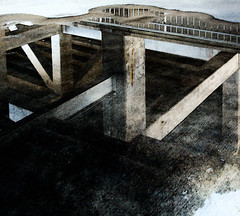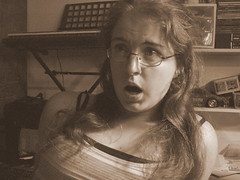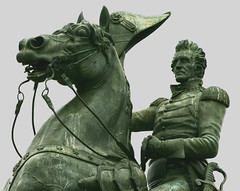Intuitively, we all know when a story has good structure, but we don’t all have an intuitive understanding of how to actually execute (or even explain) that structure. But knowing how to partition your story and how to pace the major events and turning points makes a huge difference between a novel that’s publishable and one that’s not.
Most plotting methods can be helpful in brainstorming types of events, but they don’t often help with the actual pacing. I’ve been using Larry Brooks’s “Story Structure” method for three and a half years and six novels. But it’s also really useful in revisions. I’ve used it on two novels I wrote before I discovered Story Structure—including the novel I took from rejection to offer.
 Larry Brooks, author of many, many scripts, four published novels, and the blog StoryFix, published this in a blog series. It’s very much worth it to read the Story Structure full series, but I’ll give a quick overview here.
Larry Brooks, author of many, many scripts, four published novels, and the blog StoryFix, published this in a blog series. It’s very much worth it to read the Story Structure full series, but I’ll give a quick overview here.
The structure is in four parts with three turning points separating them (plus two “pinch points”). Each part of the story should be about one quarter of the story.
Part one is the Set-up. In this part of the story, we meet the characters and are introduced to the story question. (If you’re reading this and thinking “Oh, the Ordinary World,” you’re not alone.) Here we also establish what’s at stake, but most of all, we’re working up to the turning point at the end of this part: Plot Point 1.
Brooks says that First Plot Point is the most important moment in your story. Located 20-25% of the way into your story, it’s
the moment when the story’s primary conflict makes its initial center-stage appearance. It may be the first full frontal view of it, or it may be the escalation and shifting of something already present.
This is a huge turning point—where the whole world gets turned on its head. (If you like, you can say this is where we formally pose the story question.)
PP1 bridges into Part 2—the Response. The hero/heroine responds to the first  plot point. This response can be a refusal, shock, denial, etc., etc. That doesn’t mean they have to do nothing—they have to do something, and something more than sitting and stewing—but their reactions are going to be . . . well, reactive. The hero(ine) isn’t ready to go on the offensive to save the day quite yet—they’re still trying to preserve the status quo.
plot point. This response can be a refusal, shock, denial, etc., etc. That doesn’t mean they have to do nothing—they have to do something, and something more than sitting and stewing—but their reactions are going to be . . . well, reactive. The hero(ine) isn’t ready to go on the offensive to save the day quite yet—they’re still trying to preserve the status quo.
In the middle of this part (about 3/8s of the way through your story), comes Pinch Point 1. Brooks defines a pinch point as “an example, or a reminder, of the nature and implications of the antagonistic force, that is not filtered by the hero’s experience. We see it for ourselves in a direct form.” So it’s something bad that we get to see happen, showing us how bad the bad guy is, raising the stakes.
At the end of the Response comes the Mid-Point. As the name suggests, this is halfway through the story. And here, the hero and/or the reader receives some new bit of information. It’s pretty important, though—this is the kind of revelation that changes how we view the story world, changing the context for all the scenes that come after it.
Then we swing into Part Three, the Attack. Now our hero(ine) is ready to go on the  offensive. He’s not going to operate on the bad guy’s terms anymore—he’s taking matters into his own hands, and he’s going after the bad guy. This is the proactive hero’s playing field now.
offensive. He’s not going to operate on the bad guy’s terms anymore—he’s taking matters into his own hands, and he’s going after the bad guy. This is the proactive hero’s playing field now.
In the middle of this part (5/8s of the way through the story), comes Pinch Point 2, which is just like PP1—a show of how bad the bad guy is.
Part Three ends with a lull before the Second Plot Point, our last new information in the story. This last revelation is often the key to solving the mystery or fixing the problem—it’s the last piece of info the hero needs to make his world right. This comes 75% of the way into the story.
And now we’re ready for Part Four, the Resolution. Our hero steps up and takes the lead for the final chases, the last showdowns. Here we get to see how much of a hero he really is—he passes his final tests, proves he’s changed and finally, saves the day.
What do you think? Can you see this in place in your writing, or in other works? What advantages do you see to this method?
Photo credits: structure—Christopher Holland; gasp—Becka Spence; attack—D. B. King

